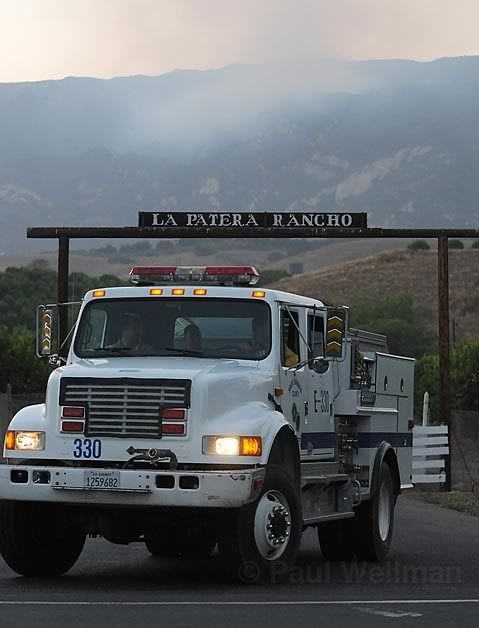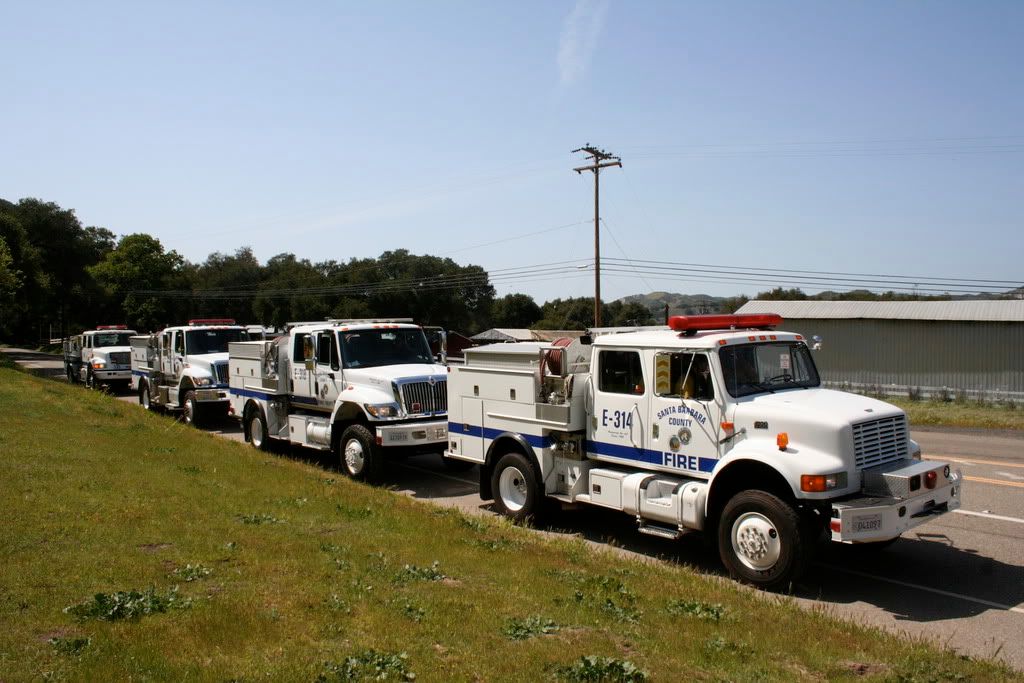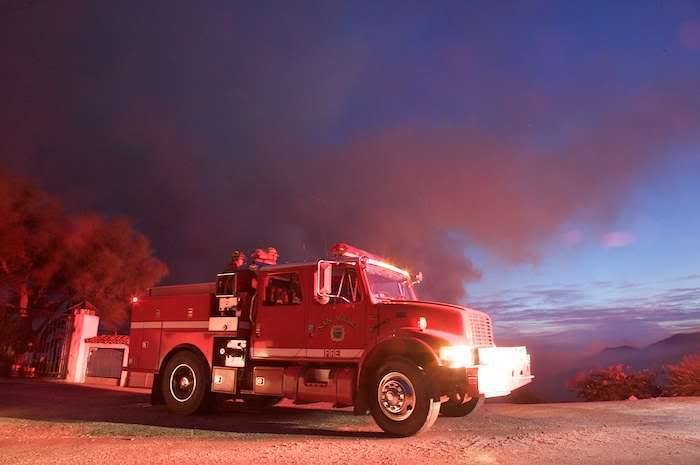SHOULD EVERY RURAL F.D USE BRUSH TRUCKS OR JUST STILL USE ENGINES
Tags:
Replies to This Discussion
-
Permalink Reply by Alex on November 30, 2007 at 8:14pm
-
well from where im at in north carolina our department actually needs a brush and an engine...cause of all the woodland around us and cause we have a godd sized community...so i guess im sayin all departments should really have both
-
Permalink Reply by Rhino on November 30, 2007 at 8:37pm
-
well i think their is still lots of reason to continue to use your brush truck because their are some places that a brush truck can get to that an engine cannot!! so use both if need be for more water.
-
Permalink Reply by jeff schick on November 30, 2007 at 8:51pm
-
i like our quick attacks and heavy grass trucks vs the engine your able to expand the places you may go to extinguish the fire. Also your not tearin up the engines. We'll use the engines for water shuttle if needed that way they stay on the pavement or a well groomed gravel road.....
-
Permalink Reply by Eric on November 30, 2007 at 9:32pm
-
well i come from a department where most of are calls are grass fires n a brush truck comes in hand quite a bit . But just make shure its 4x4 n has some good tires on it. having a brush truck saves man power n energy it beter than pulling all ur hose then having to stop roll it up and move ur truck n do it all over while battling the fire.
-
Permalink Reply by Crockett on November 30, 2007 at 9:58pm
-
In Southwest Florida, any brushfire we get is usually bad (see pics on my page). Even though we have flat land, we must contend with lots of mud & VERY thick brush (palmettos, paper trees, etc.).
The swampy land requires at least 4x4 capability, and especially the palmettos can tear up the bottom of a truck in a heartbeat, thus affecting our response time if we don't have units capable of reaching the head fast.
We've got a few depts in the area using Oshkosh TFFTs (Military & Airport CFR units) as Brush trucks that still get stuck (8x8 drive).
Personally, Alva (my district) keeps 2- 1000 gal. Brush Trucks in service (1978 & 1983 Ford F-600 4x4 Commercial trucks w/ rear booster lines, 1.75 front deck handline, and 2.5 on board) and has 2 more being built at this time (2.5 ton 6x6s from MacDill AFB in Tampa). We are 39.5 sq. miles of rural land with no hydrants, but the Caloosahatchee River bisects the district from E to W (we can pull a draft w/ almost anything LoL).
We regularly respond with brush strike teams all over S FL during brush fire season which actually starts tomorrow. It is already gearin up to be a bad one @ 600+ on the Keech-Byram drought index- see http://flame.fl-dof.com/fire_weather/KBDI/index.html (We're the red area)!!!
Long story, I know, but I'm proud of our brush trucks- they are an absolute necessity in our area; in conjunction with Forestry's dozers & choppers they are the only way to stop a brush fire on a dry windy day. - Attachments:
-
-
 Hunt & B-121 STUCK.jpg, 82 KB
Hunt & B-121 STUCK.jpg, 82 KB -
 Lehigh Fires 6.jpg, 20 KB
Lehigh Fires 6.jpg, 20 KB
-
-
Permalink Reply by Jeffrey on November 30, 2007 at 10:26pm
-
Here in Coffee County Ga, we are useing old forestery trucks, Here he have 1 full time station and 10 Volunteer station, and alot of the vol stations are the old forestry trucks
-
Permalink Reply by Brian Dumser on August 23, 2008 at 4:36pm
-
We respond an Engine first to all reported brush fires. If the Engine gets on scene and needs assistance, then the Brush Truck responds. Most brush fires we get here are extinguished with a water can!
-
Permalink Reply by Brian Dumser on August 23, 2008 at 8:03pm
-
Nice pics! In the second one, was that a sink hole or did the driver just go over the edge?
-
Permalink Reply by Wes Anders on August 23, 2008 at 8:37pm
-
In our area we couldnt respond with engines the terrian is to rough or sometimes its just to sandy. We do responds with an engine if it is a structure fire and we can get to it.
-
Permalink Reply by Mike Schlags (Captain Busy) Retd on August 23, 2008 at 8:41pm
-
It's all about access... and potential...
* What's the age class of your brush?
* What's the local weather patterns?
* How much hazard presents itself, i.e. wildland urban interface?
* What's your water supply access like?
* Do you have a good hydrant system all over the place or do you have to rely on water tenders?
* Do you need 4x4 capabilities due to inaccessibility or access issues?
I have served on my departments apparatus committee for over 20 years now and have participated in the design recommendations for Type III Heavy Brush trucks. The first wildland firefighting was my department, starting in 1926 when the local ranchers needed to control wildfires in the mountains and valleys around Santa Barbara. Small trucks with front mounted pumps were used back in the day, now considering that we face some pretty nasty conditions, our choice of apparatus are the Type III's. I'm not sure where you are from, but when we think wildland urban interface, this is what we see:

To combat this type of fire, we designed our brush trucks using Masterbody and Westmark for the manufacturing of the rigs. Our design has become a standard that a lot of departments now copy nationally according to these manufacturers.


Here's a strike team of our Type III's:

Of course we are not the only user of the Type III's. CDF uses Type III's and has a lot more than we do. We only have eleven Type III's and a couple of reserve Type III's. Note below how we are now using hooks on the back of the Type III's for running attacks and Foam & Go Ops.


-
Permalink Reply by Robert Galbraith on August 23, 2008 at 8:56pm
-
Well its according to the situation... i just came home from a call that a brush truck would have been great instead of trying to move our pumper around in that little area... we are being hit with a lot of rain from that tropical storm so we could not back off the concrete into the wet grass... i small 4 door brush truck would have been great tonight with that call since it was just a kid locked in a car and not a fire...
-
Permalink Reply by Mike Schlags (Captain Busy) Retd on August 23, 2008 at 9:56pm
-
Small four wheel drive trucks don't have the height or weight to be able to get in and through either soft soil coupled with a grade or wetlands responses. The additional height, weight and large tires make access pretty awesome. I was an engineer for 15 years and loved taking these babies to the max...
Specialty Websites
Find Members Fast
Firefighting Videos
© 2025 Created by Firefighter Nation WebChief.
Powered by
![]()
Badges | Contact Firefighter Nation | Privacy Policy | Terms of Service